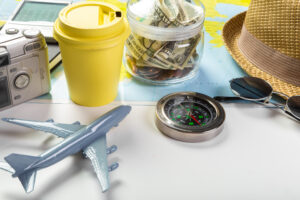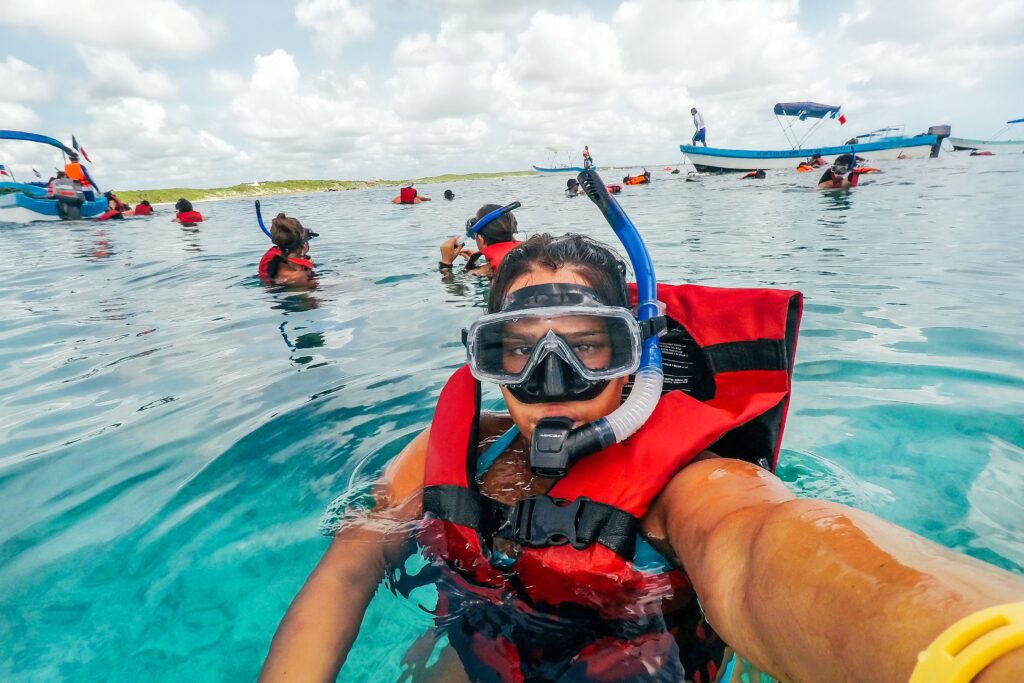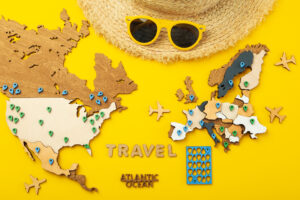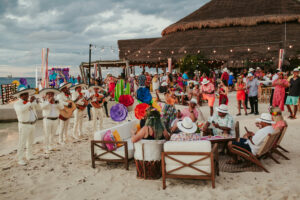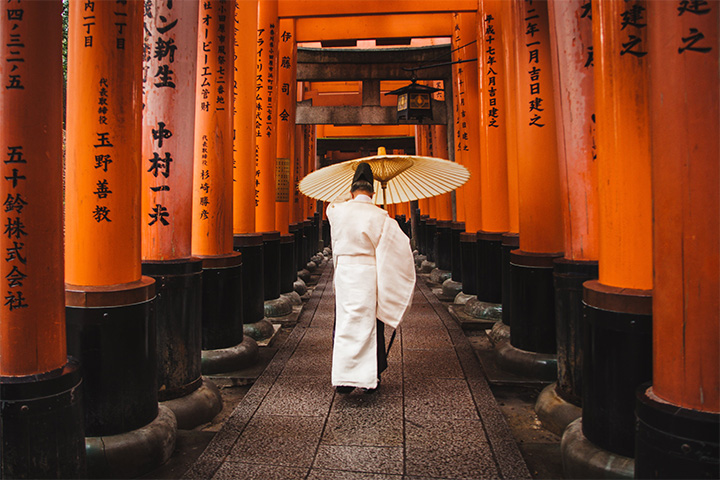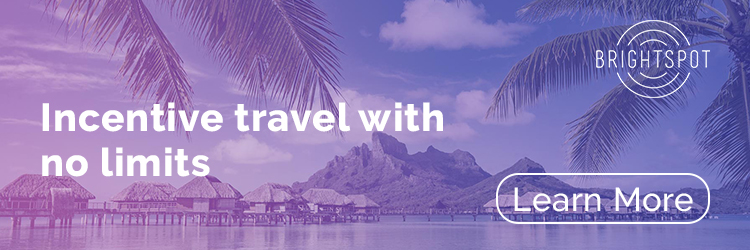Embarking on the journey of planning an incentive travel program involves careful consideration of various factors, with one of the most critical being budgeting. Creating an unforgettable experience for high-achieving employees requires a deep dive into the intricacies of budget considerations. In this blog, we’ll explain the average cost of incentive travel programs and examine the key factors that shape their budgets, offering insights and recommendations to help you make informed decisions for your next incentive trip. Whether you’re a seasoned planner or venturing into incentive trips for the first time, understanding the cost dynamics is essential for creating impactful and successful programs.
Incentive Trip Budget Advice
A wise budget for an incentive travel program (also called a President’s Club Trip) is $6,000 per person going to the continental USA, Canada, or Mexico. Key inclusions in a $6,000 budget are:
- a trip for 4-5 nights (and 5-6 days)
- an “incentive quality” 4-star hotel
- economy class airfare for 2 – the winner plus their spouse or guest
- two hosted activities or excursions, such as spa, golf, ziplining, ATV rides, catamaran sailing, or other local adventures
- all meals covered, including a welcome reception and an award dinner
- welcome gift
- website for the promotional period and online registration
- collateral, name badges, luggage tags, pre-trip mailers, and on-site signage
- incentive travel planning services
Popular Incentive Trip Upgrades
- For an incentive trip to the Caribbean or Hawaii, a company should increase the budget to $7,000 per person for higher airfare costs and higher meal costs due to importing food to a remote island.
- For an incentive trip to Europe, the budget should be $8,000 per person due to intercontinental airfares, higher ground transportation costs, and extra event venue costs.
- If you opt for a luxurious 5-star resort, add $2,000 per person to spoil your winners at a Four Seasons, Ritz-Carlton, Belmond, or Rosewood hotel.
- Or adjust the budget by an additional $500 to $2,000 per person to elevate attendee gifts, enhance the entertainment, or incorporate additional “wow” elements into the incentive trip.
Cost Benchmarks
Prevue Magazine released the most recent cost estimates based on its survey of corporate in-house incentive planners. The Corporate Incentive Trends Survey reported the average per-person budget for 2023 trips was $6,177. The study adds that 58% of respondents predicted increasing their incentive budget.
One of the most comprehensive research studies (although it is now a bit dated from 2019) reported the average cost of an incentive travel program was $5,193 per person, according to the IRF/SITE/FICP Incentive Travel Index. This joint study from the Incentive Research Foundation (IRF), Society for Incentive Travel Excellence (SITE), and Financial & Insurance Conference Professionals (FICP) was the most extensive survey of the incentive travel market. The large survey size provided reliable benchmarks. Adjusting for “vacation inflation” of 20%-30% in recent years, this high-quality metric validates the Brightspot guidance of $6,000 per person for North American trips, $7,000 for Hawaii and the Caribbean, and $8,000 for Europe (plus added premiums of $2,000 to upgrade to 5-star resorts).
To share extra commentary, the average cost of $5,193 (above) was likely pulled lower by shorter-duration trips within the Continental US48. For example, the research probably included short, 3-night trips to Las Vegas for call center employees or modest top-performer trips for retail store managers.
Industry-Specific Incentive Trip Budgets
In two “signature studies” on Top Performing Companies, the IRF research reported the distinctions that the best-of-the-best sales organizations invested in their top achievers. Although these studies are also several years old and need to be inflation-adjusted by 20%, the research highlights that certain industries are known as big spenders for their top-tier trips recognizing elite performers.
- Financial Services Firms spent $6,673 per person. See reference deck, slide 67, for research on insurance companies and financial advisory firms, which are both significant users of reward trips.
- Technology companies spent $6,833 per person. Technology companies are often global organizations with winners flying from Asia, Europe, and North America, which increases airfare costs.
Budget Factors for Incentive Travel
In the world of incentive trips, crafting a memorable experience for top-performing employees involves more than just choosing a destination. More than a beach and a flight; more than a bed and a ride. The success of such programs hinges on carefully navigating the seas of budget considerations. Let’s delve into the key factors that shape incentive trip budgets.
Destination Variety
The choice of destination sets the stage for the entire incentive trip. US companies often rotate between Mexico, the Caribbean, Hawaii, and Europe. Global organizations will rotate more widely, embarking on journeys through Europe, the Caribbean, Hawaii, and occasionally Asia or Oceania. Dive into the top incentive travel destination list to kickstart your bucket list daydreaming. As covered in the Popular Upgrades section, farther destinations increase airfares, hotels, food, and logistics costs.
All-Inclusive is Popular
For those dipping their toes into incentive trips for the first time, all-inclusive resorts in Mexico emerge as the champions of value. Destinations like Cancun, Riviera Maya, and Puerto Vallarta offer an ideal starting point, stretching your budget while leaving room to elevate the trip in future years. For a touch of upscale elegance, Punta Mita and Los Cabos offer excellent alternatives.
Airfares
While farther destinations to Hawaii and Europe will expectedly increase airfares, the originating airports where winners start their journey significantly impact budgets as sales organizations become more global. Larger quantities of winners flying from other continents are driving up the portion of budgets allocated to airfares.
Trip Duration
For many years, a 5-night trip was the norm. In the era of fast-paced business and budgetary pressures, many companies have shortened the traditional 5-night incentive trip to a 4-night celebration. Prevue’s Incentive Trends Survey validated that the most common trip length is 4 nights and 5 days. Also, and humorously, many CROs (Chief Revenue Officers) are hesitant to pull their top reps from the field for long and want them back selling again. Most companies add an extra night whenever the trips go further to Hawaii or Europe.
Hotel Star Rating
While the desire for a 5-star resort often tops the wish list, budget realities force many companies to settle for a 4.5-star option or a high-quality 4-star gem in a fabulous destination. The key is to ensure the hotel aligns with a “group mindset” (rather than focusing on leisure vacationers or honeymooners), is “incentive-quality,” and the destination boasts a robust infrastructure to support groups.
Meals and Beverages
Most incentive trips cover all meals, with some exceptions for customer and partner getaways that allow attendees more free time without as many structured events or hosted meals. Another large cost driver is the adult beverages served during the open bar at receptions and dinners. Some companies have shortened bar hours to control costs and limit other risks.
Activities and Excursions
Balancing recreation and relaxation, every other day typically features a company-hosted, off-site activity. Golf has driven many trip decisions in past decades, but now, the spa is one of the most popular choices. Other activity options often include catamaran and snorkel combinations, sunset cruises, ziplining, or ATV adventures. Recent research from the IRF Attendee Preferences Study highlights a new trend – the #1 requested activity has become ample downtime to relax – with “day at leisure” allowing attendees to decompress while helping the budget, too!
Unique Experiences
Recently, many incentive agencies have creatively offered unique, localized experiences in each destination that leisure travelers might not be able to do on their own. This appeals to the varied interests of winners, especially Millennials, and simultaneously dives into the authenticity of the local culture.
Entertainment
Options for entertainment vary widely, and so do the costs. Many companies will hire local performers or DJs to entertain attendees during the welcome reception and award dinner. Some large trips will fly in preferred bands, which increases performance costs and audiovisual demands and costs, too.
Gifting Transformations
In the earlier years of incentive trips, the tradition was multiple nights of room drops, or pillow gifts, of smaller items. But now those funds are being pooled together for a grander gifting experience upon arrival. Imagine choosing from Maui Jim sunglasses, OluKai sandals, Bose electronics, personalized Nike shoes, or indulging in a Tommy Bahama shopping spree.
Collateral and Promotion
A motivational incentive travel program is more than a company-paid vacation. Collateral often gets overlooked and neglected. Incentive agencies will assist with named badges, customer luggage tags, pre-trip informational mailers, on-site signage, and banners. Professional graphic design is necessary to deliver an upscale visual impression. Strong promotion during the qualification period is essential, too. Without promotion, you can have a nice recognition trip – with good promotion, the trip becomes a motivational incentive trip!
Motivational Value
How ever these factors drive your budget, remember that incentive travel is not a cost, but it is an investment in motivating and recognizing your organization that yields a positive ROI!
Recent Incentive Travel Statistics
In the current competitive talent acquisition landscape, incentives play a pivotal role in setting companies apart when it comes to attracting and keeping employees. The strategic significance of incentive travel in retaining skilled professionals is evident, with 90% of respondents in the 2023 Incentive Travel Index highlighting its role. The IRF 2024 Trends Report explains the key to culture-building, incentive and recognition programs play a crucial role in uniting a dispersed workforce, extending their influence beyond just top performers to impact 60% of producers in what is referred to as “moving the middle.” Yet, as these programs expand, there’s a growing challenge of managing increased pressure on budgets. Incentive travel programs are designed to motivate and retain employees, but finding the right balance within budget constraints is essential for long-term success.
The “2024 Outlook and To-Do’s for Meetings, Incentive Travel, and Sales Incentives” blog calls out that the general inflation rates of 7% in 2021, 6% in 2022, and 5% in 2023, coupled with a resurgence in leisure and group incentive travel, have surged costs by a minimum of 20%. Distinctly, the IRF/SITE Incentive Travel Index research highlights that 76% of executives identify rising costs as a significant challenge. The blog underscores a critical point: budgets are often elevated to sustain programs and do not inherently indicate incentive program growth. This insight emphasizes the need for organizations not only to counteract inflationary pressures but also to actively reassess and enhance budgets to foster the expansion and improvement of incentive initiatives in the face of escalating costs.
Get More Money
A recurring trend from every new IRF and SITE study is to “get more budget.” In the last four annual studies, companies increased per-person spending by approximately 5% annually. “Vacation inflation” surged after Covid lockdowns, which triggered revenge travel and rapid rises in demand for consumer travel.
Creating challenges for incentive planners, recent studies reported that planners feel their travel costs are increasing faster than budgets – placing them in a difficult position where it’s harder and harder to find bargains in a strong market for hoteliers.
Suggestion – Stomp into the CFO’s office with these studies rolled in your hand, pound a fist on the desk, and yell, “Our club trip needs 20% more budget!”
Cost of Agency Help
Suppose your incentive travel group is larger than 40 people (20 qualifiers and 20 guests). In that case, an incentive travel company can save money, add creativity, avoid common mistakes, free up internal management, and add impeccable service.
An incentive travel company will provide a more comprehensive perspective across various industries, destinations, and trip characteristics, ensuring a well-rounded and diverse experience to motivate all participants. Most companies wonder if hiring an incentive travel company is more expensive, but they discover it’s a “zero net cost.” Through strategic planning and negotiation, agencies can reduce overall costs, make the investment worthwhile, and produce savings that offset their fees. Analytical data consistently underscores the cost-effectiveness of partnering with incentive travel agencies.
Learn more about when to hire an incentive travel company and the cost of hiring an incentive travel company.
Incentive Travel Budget Estimator
Brightspot offers an impressive trip estimating tool. This interactive pricing calculator empowers users to select a destination, specify the number of nights, choose the hotel star rating, outline included meals, set the number of activities, and assign a value to room gifts. Voila! A little website magic occurs, and an estimated budget per person is calculated. Simply input your winner count, and the user-friendly tool generates your total investment. Feel free to dive into planning your next incentive trip, letting your creativity flow.
Final Recommendations
If you have read to this conclusion and are starting an incentive trip for the first time, Brightspot recommends:
- Start with Mexico – It is the best value for the dollar (or peso), and access is easy from the USA.
- Keep Room to Improve – Many first-timers are tempted to make a big splash on every trip element, but starting modestly gives you room for year-over-year improvements.
- Rotate Destinations – Even if you or the CEO have a personal favorite, start a 3-year trip rotation between Mexico (or the Caribbean), Hawaii (always the #1 most popular, and each island offers a different experience), and Europe (often the most memorable).
- Call Brightspot for Help – Go to Get Started for expertise, excellence, service, and savings.
Are You Ready to Start Planning?
Explore the outstanding services we offer or reach out to us today to start planning your remarkable incentive program! With our seasoned team of professionals, we’ll handle all logistics so you can rest easy, and curate a corporate trip that leaves a lasting impression on your group. At Brightspot, our dedication lies in delivering exceptional consultation to ensure your club trips shine. Our teams do the research and background work so you can sit back and focus on the high-level decisions. Brightspot can be your helping hand every step of the way.




